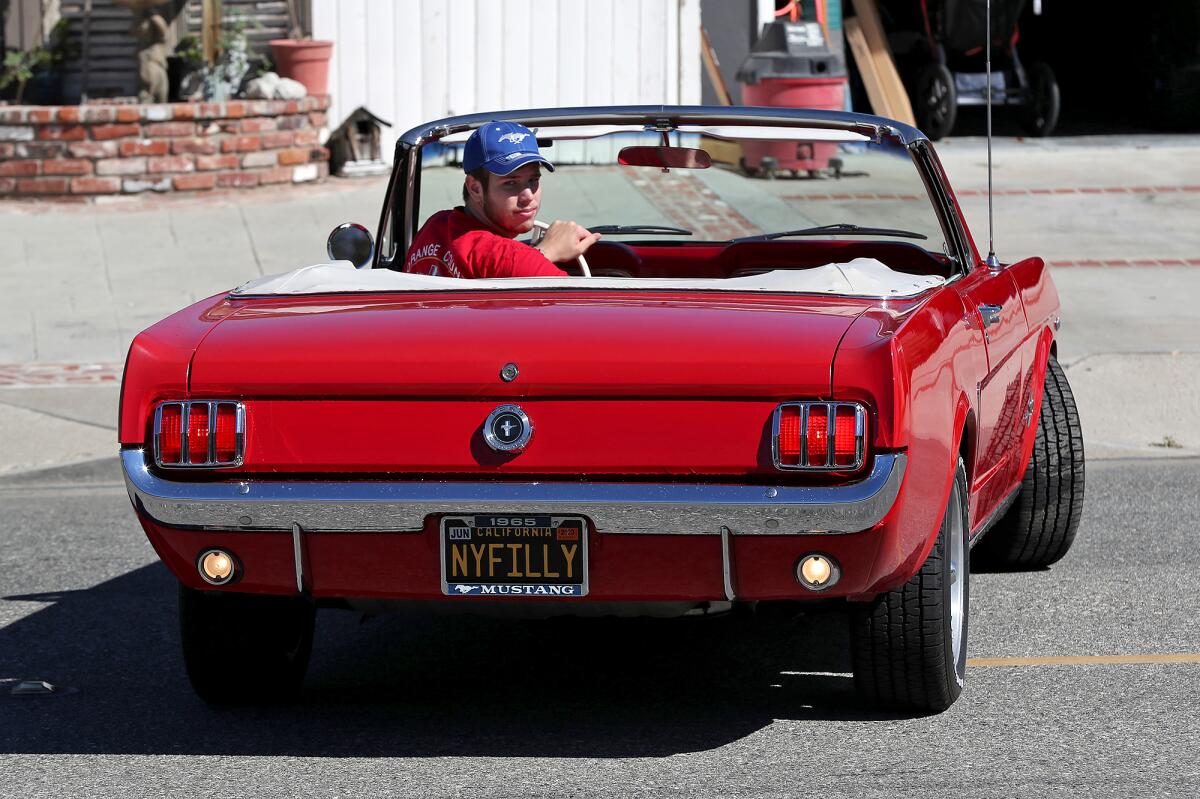A Word, Please: When it comes to phrasal verbs, you can look them up, but you can’t look up them

Can you back your hard drive up? Or must you back up your hard drive? Can you calm yourself down? Or must you calm down yourself? Can you blow balloons up? Or must you blow up balloons? Can you hang the phone up? Or must you hang up the phone? Can you keep the shenanigans up? Or do you keep up the shenanigans? Can you look the contract over? Or must you look over the contract?
And what if we replace all those nouns with pronouns? Like, for your hard drive: back it up or back up it? For balloons: blow them up or blow up them? For the phone: hang it up or hang up it? For the contract: look it over or look over it?
Like so many other aspects of English, phrasal verbs are easy to use but hard to understand. To use them, a native speaker can just follow their gut. You already know that if you’re helping a friend cope with a divorce, you’d say, “You’ll get over him” and not “You’ll get him over.” Yet, remarkably, you’d probably pick a different spot for the pronoun when suggesting she “think it over.”
A phrasal verb isn’t just a verb that teams up with a preposition. Instead, a phrasal verb is a two- or three-word combo that has at its head a verb and has a different meaning from the verb alone. For example, when you run out of a building, you’re not using a phrasal verb. You’re using “run” to mean “to move on your feet faster than walking.” So it has the same meaning with “out” as it does standing alone.
But “run out” is a phrasal verb when it means to exhaust a supply of something. When you say you run out of milk, you’re no longer talking about breaking into a jog. The meaning is different.
Many people who never learned about adverbs, adverbials and how prepositions relate to objects get “a while” and “awhile” right anyway.
Phrasal verbs can be fuzzy. Compare “wake” and “wake up,” for example. Here, the verb alone means the same thing as the two-word combo. But “wake up” is still a phrasal verb because there’s no other explanation for what “up” is doing there. “Up” is not a direction in which you wake. Instead, it’s integral to the verb, meaning “wake up” is a phrasal verb that just happens to be a synonym of “wake.”
A dictionary comes in handy when dealing with phrasal verbs. For example, do you “hold on to” something or “hold onto” it? Well, when you enter “hold onto” in Merriam-Webster’s Collegiate Dictionary online, it redirects you to the entry for “hold on,” where, a little farther down the page, you see a discussion of “hold on to.” The version with “onto” doesn’t exist, according to Merriam’s.
The same is true for “log on” and “log in.” Merriam’s doesn’t recognize “onto” or “into” in these forms. When you’re using them as verbs, keep the “to” separate. (The noun takes a hyphen, according to Merriam’s: What’s your log-in for this account?)
But all that’s easy compared to figuring out where to put the noun or pronoun. There’s no formula or rule. It’s all instinct. You’d probably say, “back up the car” instead of “back the car up,” but both are acceptable.
If you swap out the noun for a pronoun, the position usually changes. If you’re using “it” instead of “the car,” you’d never say, “Back up it.” You’d put the pronoun in the middle, and this holds true for many phrasal verbs: blow it up, hang it up, look it over, calm him down, and on and on.
So if you’re ever unsure where to put a pronoun in a phrasal verb, use your own judgment and you can’t go wrong.
June Casagrande is the author of “The Joy of Syntax: A Simple Guide to All the Grammar You Know You Should Know.” She can be reached at [email protected].
All the latest on Orange County from Orange County.
Get our free TimesOC newsletter.
You may occasionally receive promotional content from the Daily Pilot.




